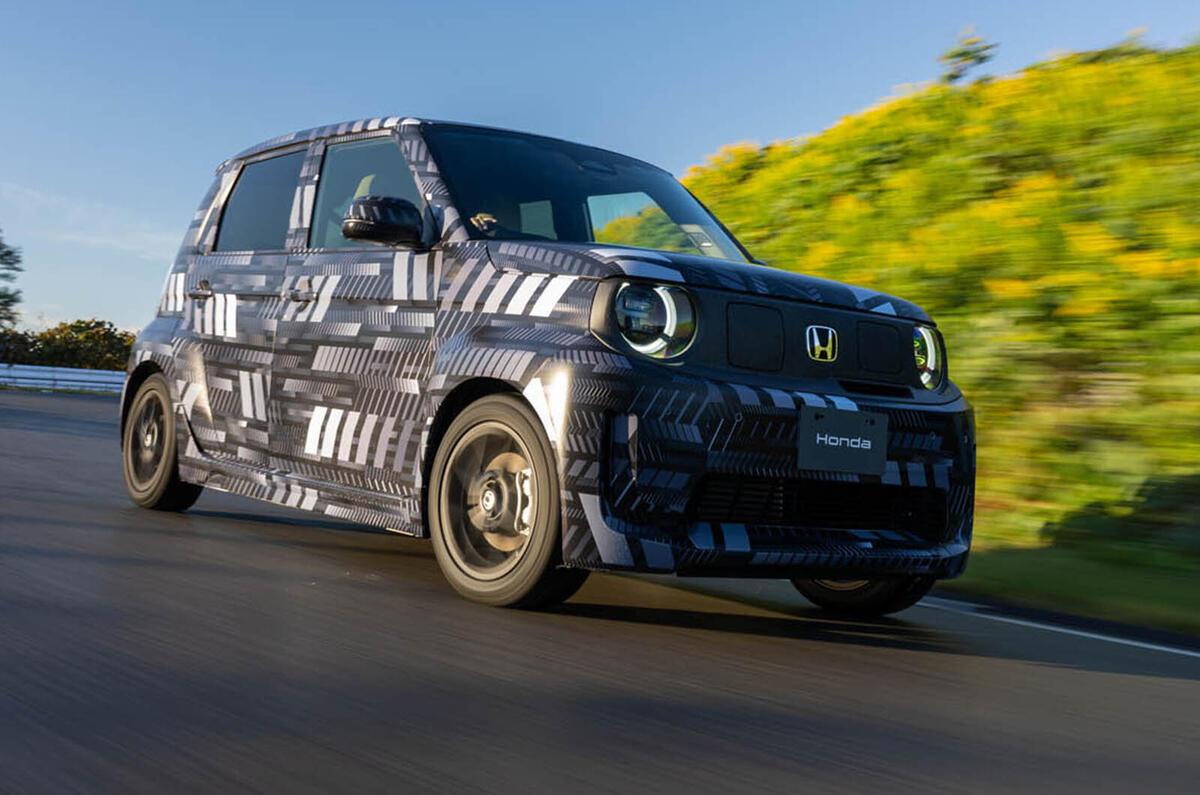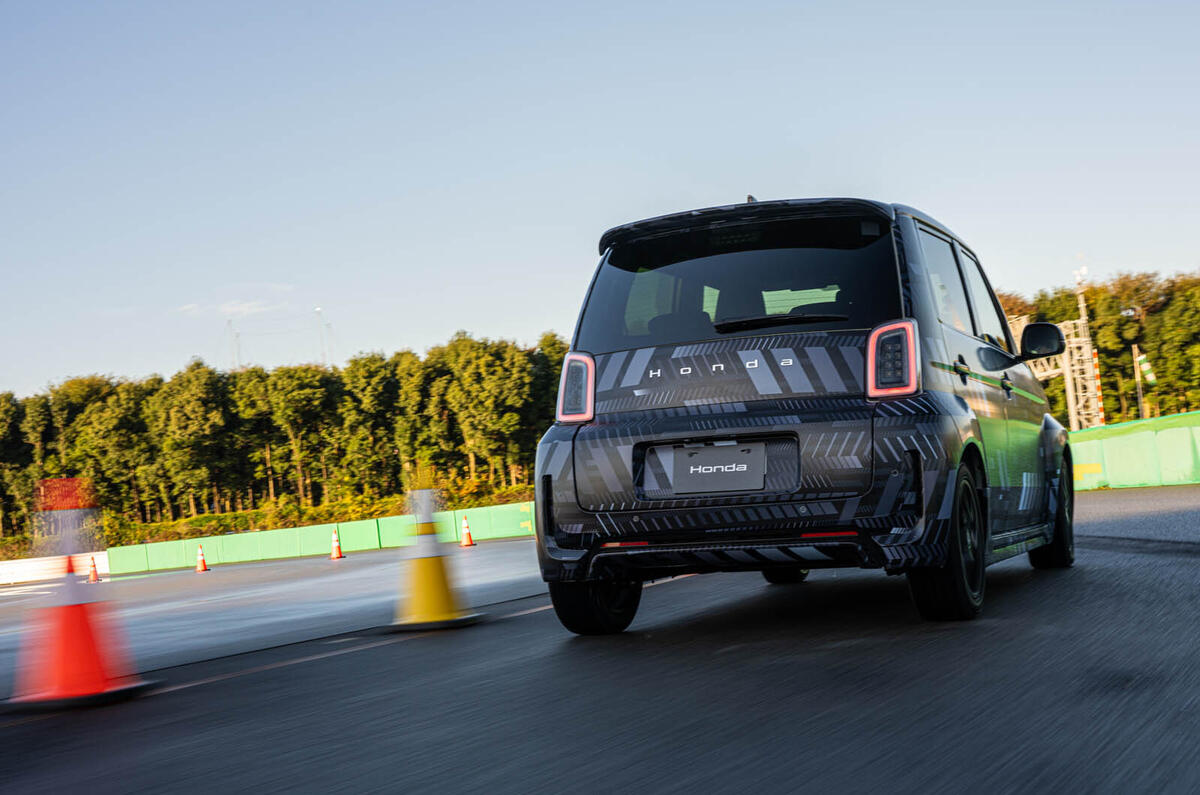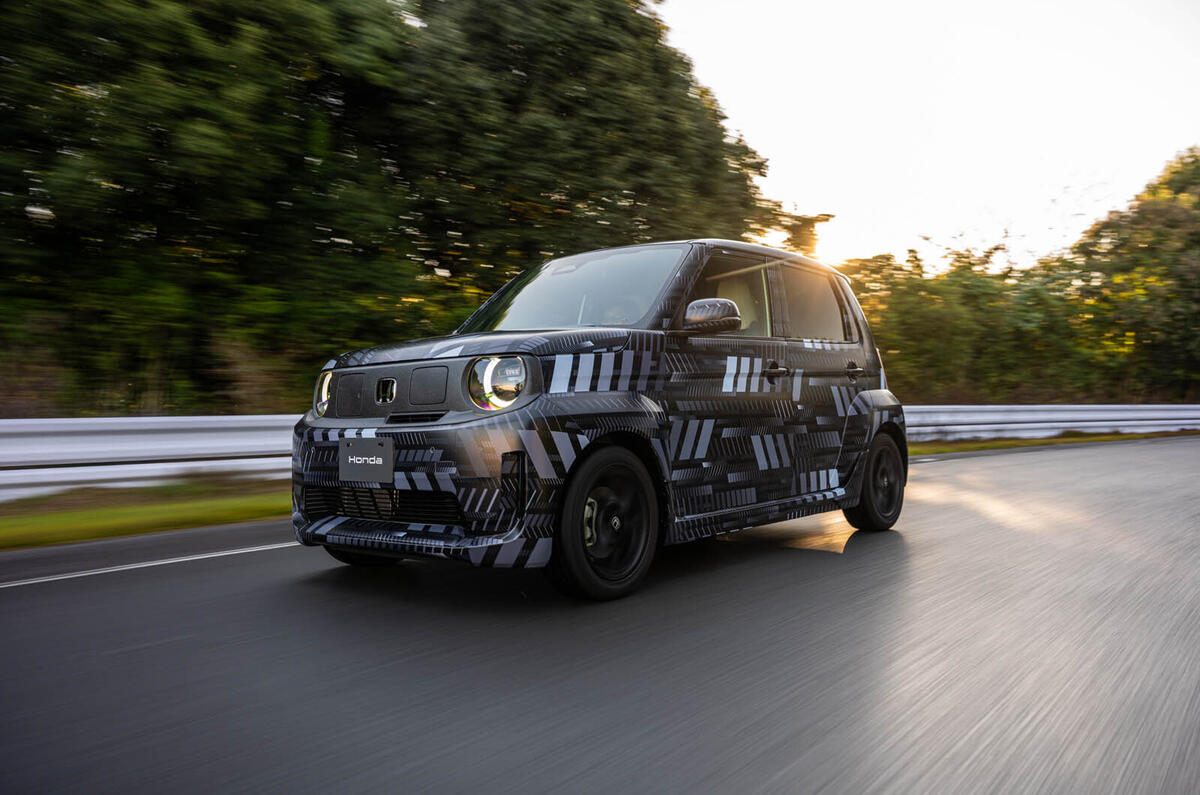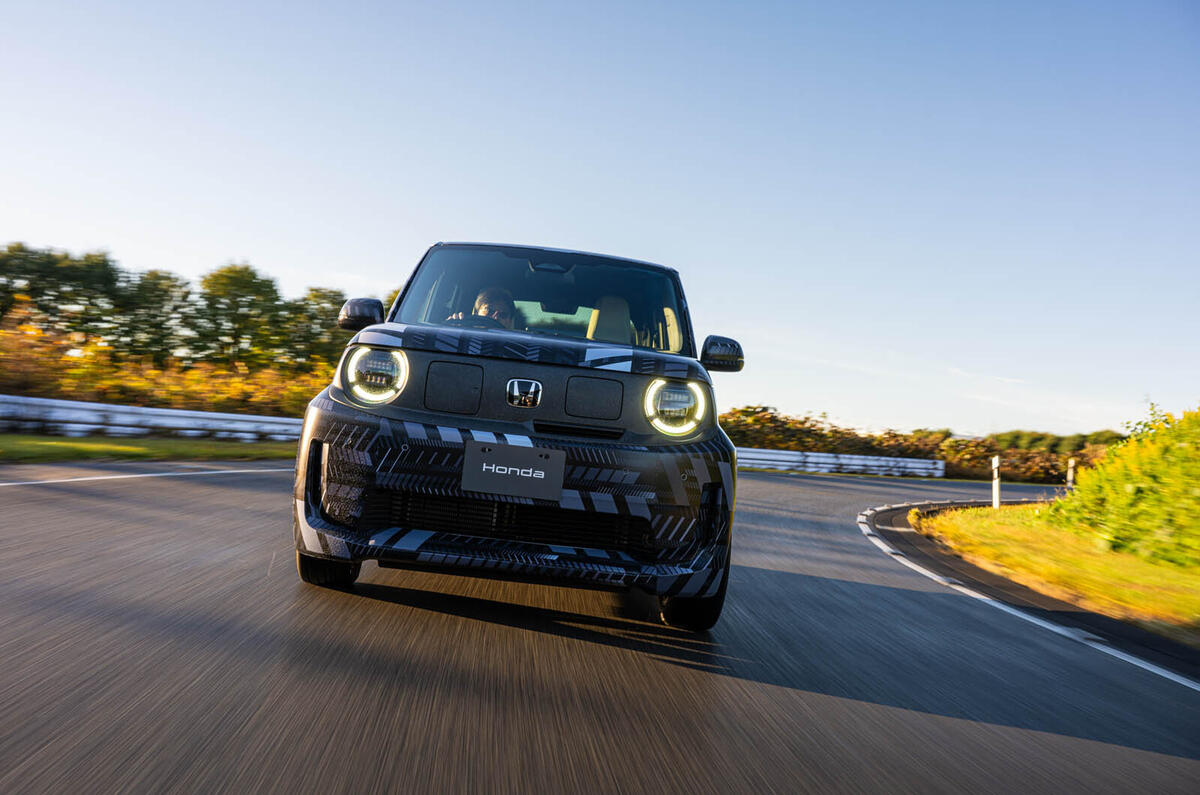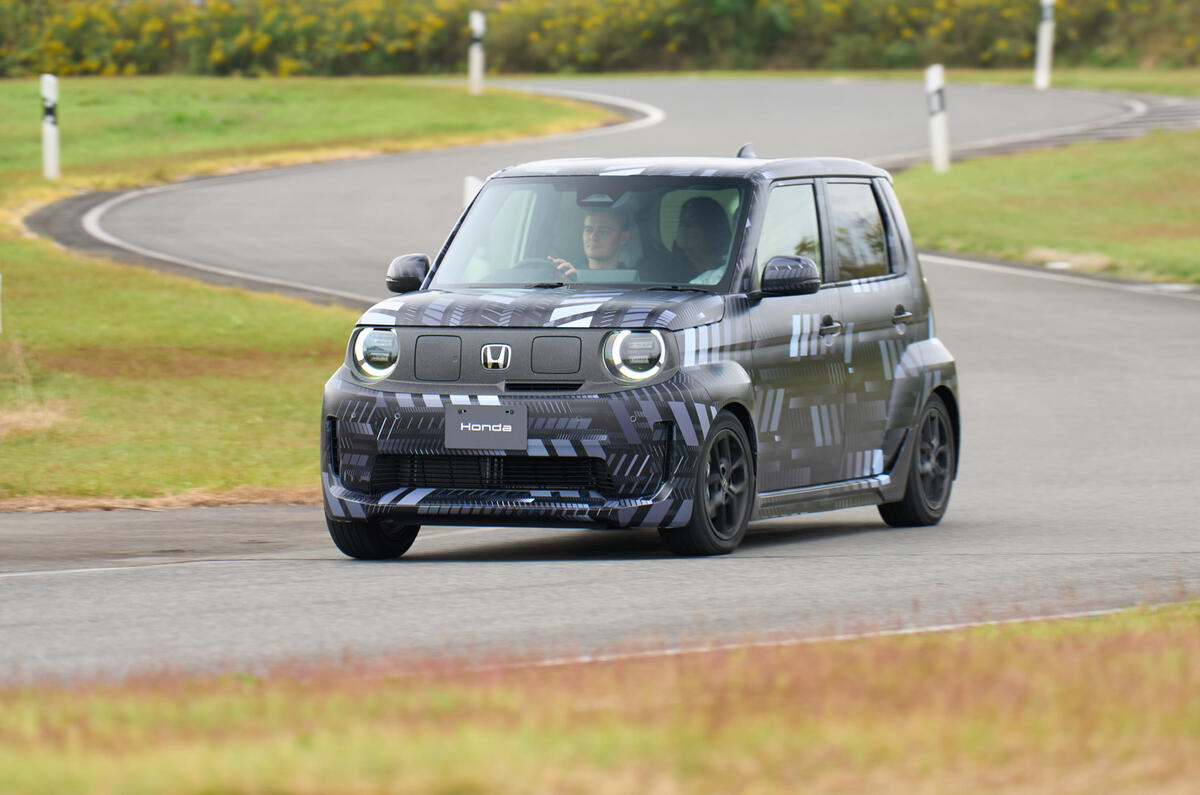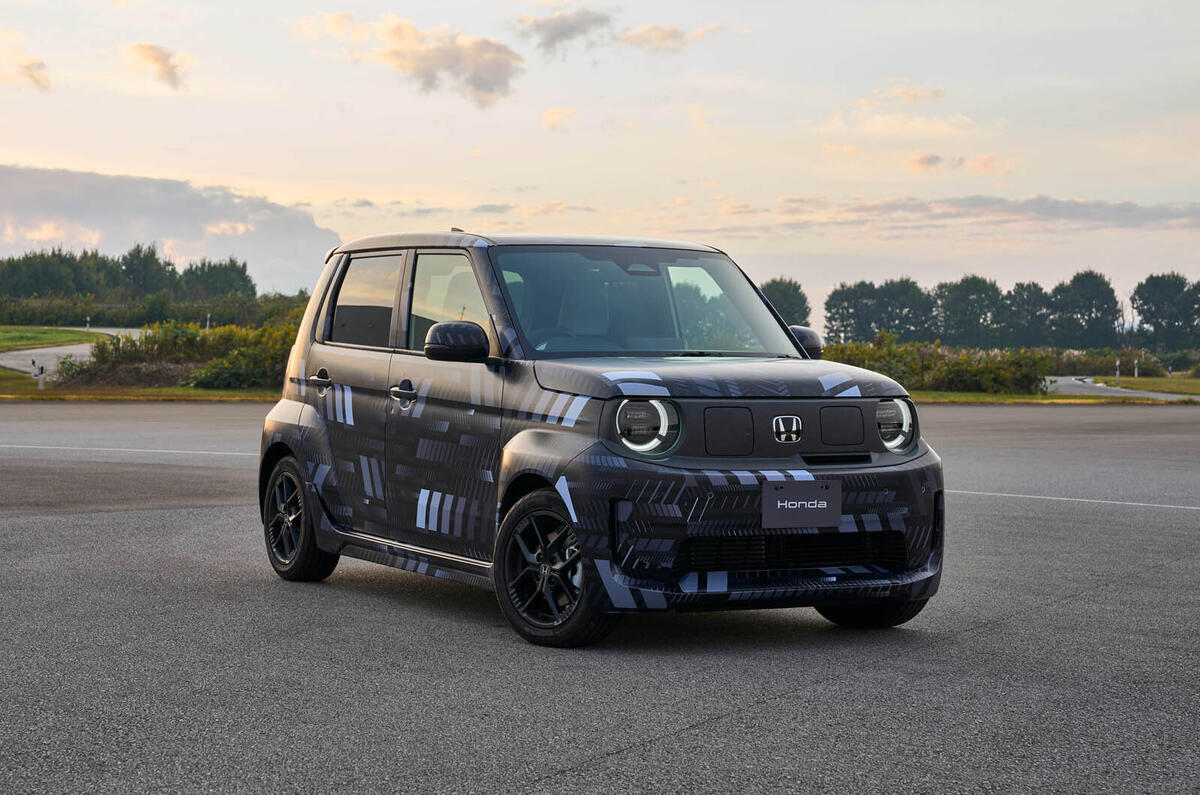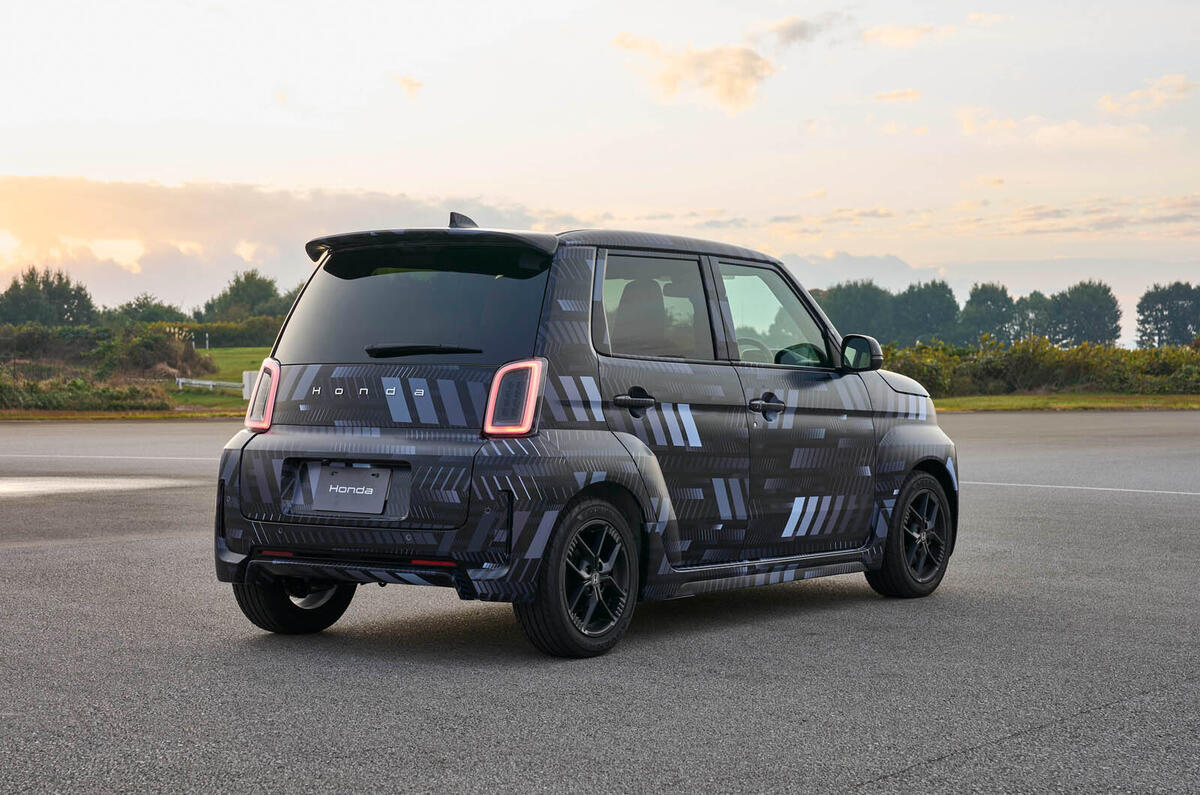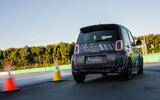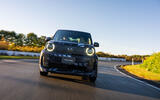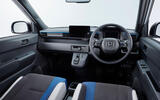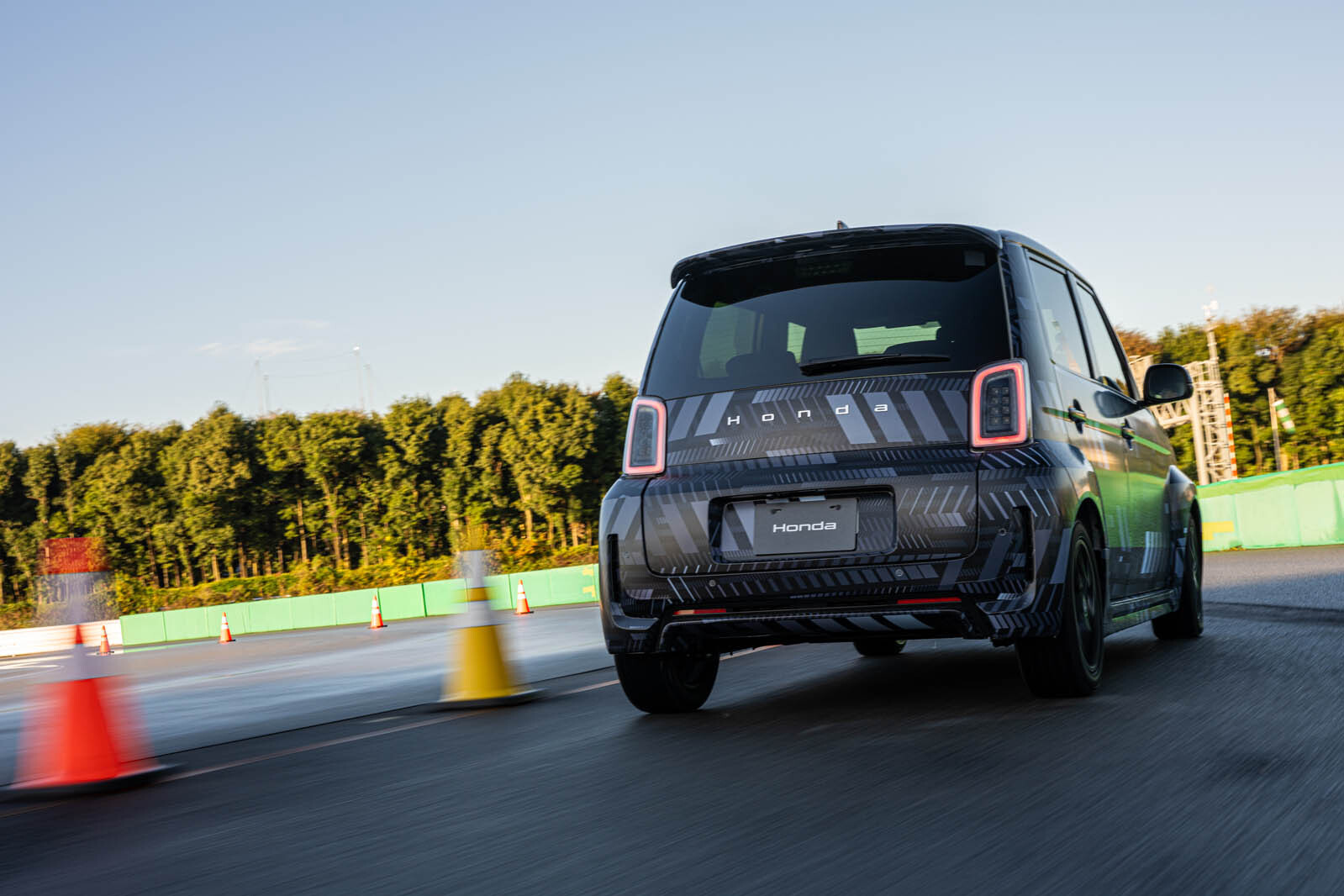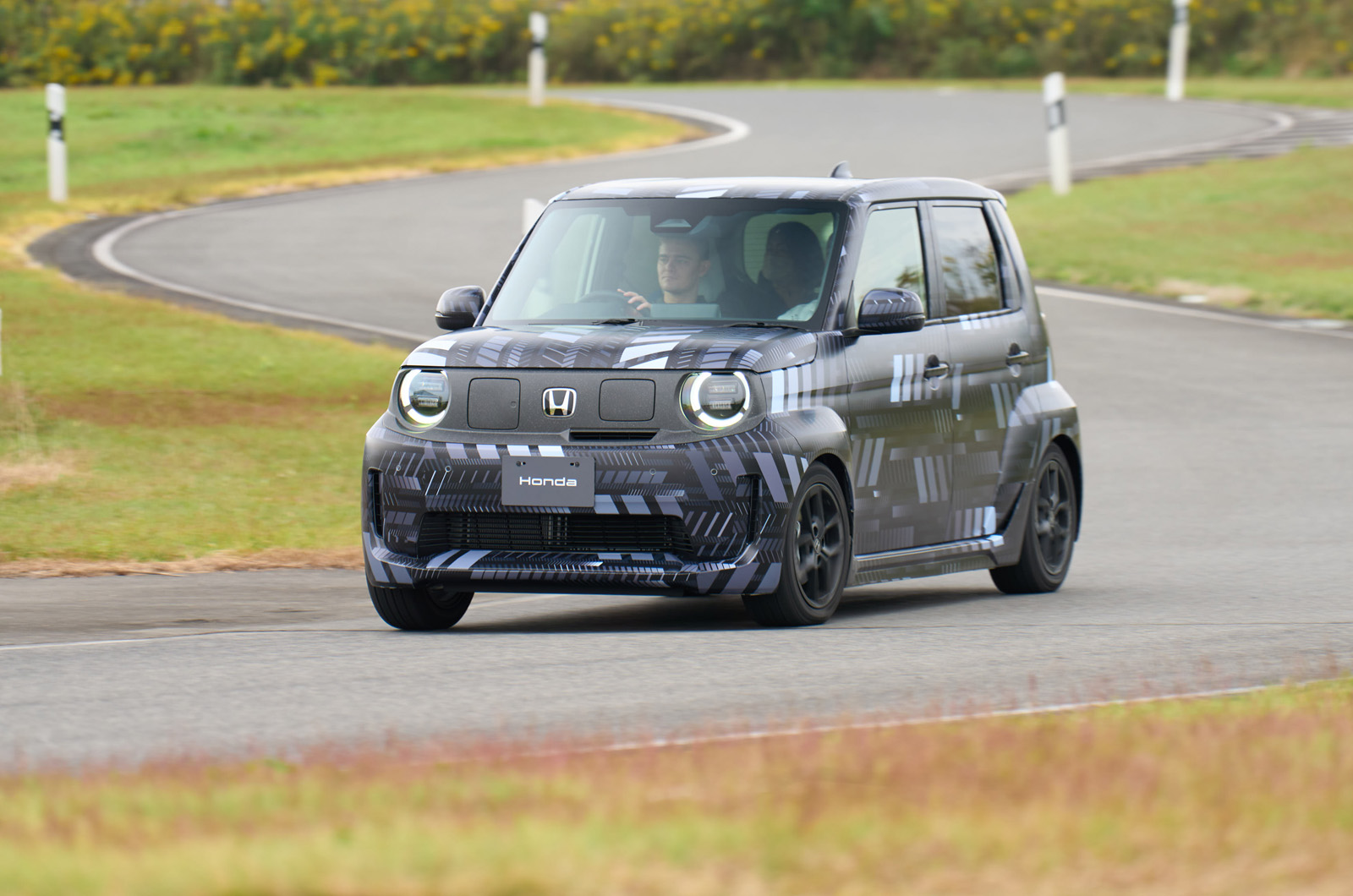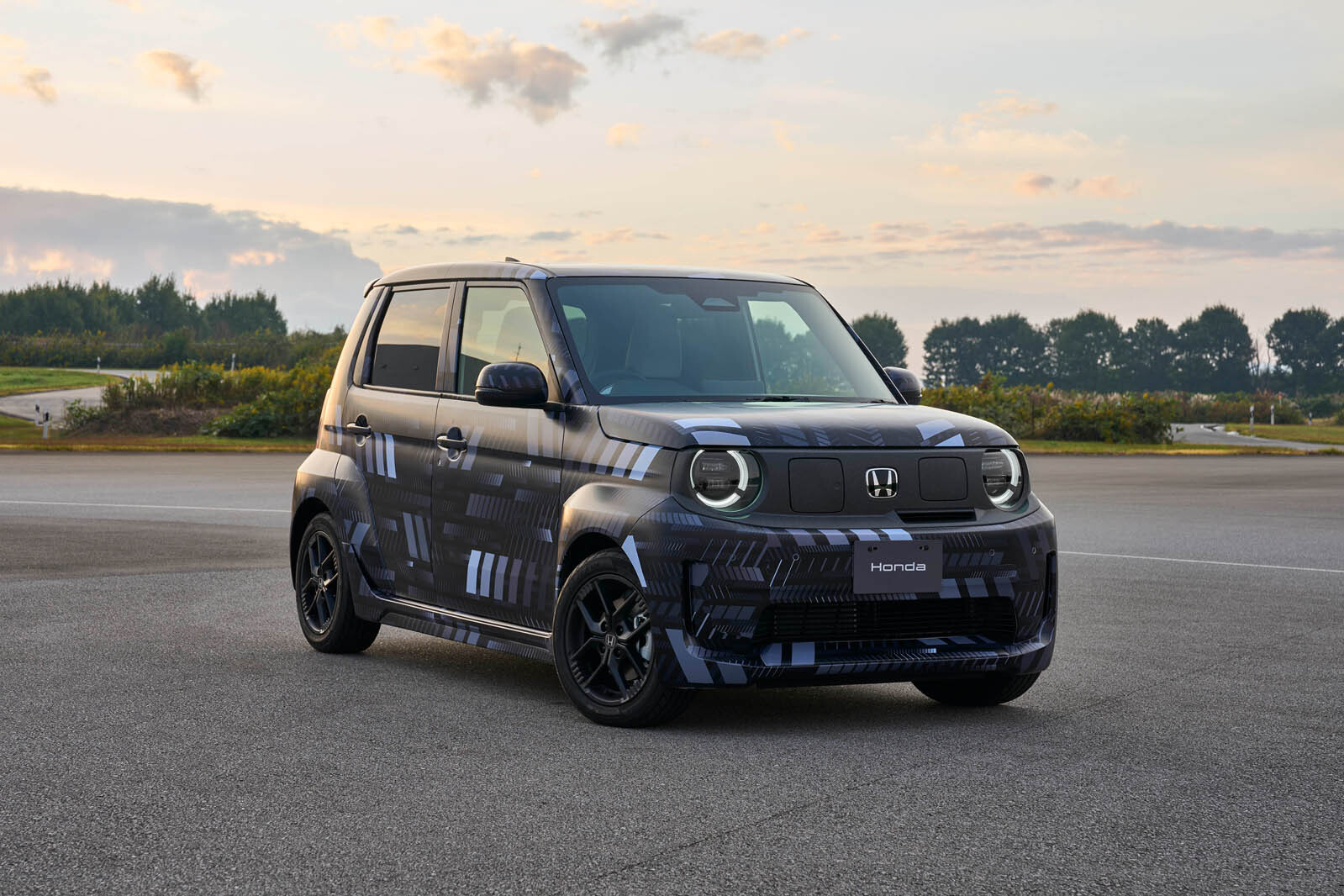Honda UK boss Rebecca Adamson says the new Honda Super-N is not intended as a successor for the dearly departed Honda E – despite the obvious visual and conceptual links.
It's still "a very funky, cute Honda," she acknowledges, but "not based on the E in any way." Instead, Honda’s second take on a funky electric city car for the UK is a hot version of the N-One E it sells in Japan – which is, itself, based on the petrol-powered N-One kei car.
In Japan, it’s called the Super-One but it can’t take that name here because a national karting league has the rights to it. There’s also a taller, longer MPV version that has sliding doors and is endlessly adorable, but there's no word on that coming to the UK – yet.
Are you keeping up? The long and (very) short of it is that the Super-N measures just 3.4m nose to tail, has a 2.5m wheelbase, weighs a little over 1300kg, seats four and looks oh-so very cute, even in the feistier performance garb it’ll wear in the UK – part of a package of market-specific adaptations that also brings a fake manual gearbox and fruity ‘engine’ note.
The spirit of the City Turbo II lives on.



